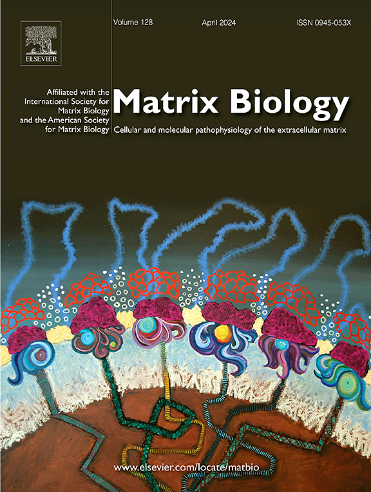Using load to improve tendon/ligament tissue engineering and develop novel treatments for tendinopathy
IF 4.8
1区 生物学
Q1 BIOCHEMISTRY & MOLECULAR BIOLOGY
引用次数: 0
Abstract
Tendon and ligament injuries are highly prevalent but heal poorly, even with proper care. Restoration of native tissue function is complicated by the fact that these tissues vary anatomically in terms of their mechanical properties, composition, and structure. These differences develop as adaptations to diverse mechanical demands; however, pathology may alter the loads placed on the tissue. Musculoskeletal loads can be generally categorized into tension, compression, and shear. Each of these regulate distinct molecular pathways that are involved in tissue remodeling, including many of the canonical tenogenic genes. In this review, we provide a perspective on the stage-specific regulation of mechanically sensitive pathways during development and maturation of tendon and ligament tissue, including scleraxis, mohawk, and others. Furthermore, we discuss structural features of healing and diseased tendon that may contribute to aberrant loading profiles, and how the associated disturbance in molecular signaling may contribute to incomplete healing or the formation of degenerative phenotypes. The perspectives provided here draw from studies spanning in vitro, animal, and human experiments of healthy and diseased tendon to propose a more targeted approach to advance rehabilitation, orthobiologics, and tissue engineering.
利用负荷改善肌腱/韧带组织工程和发展肌腱病的新疗法。
肌腱和韧带损伤非常普遍,但即使得到适当的护理,也很难愈合。由于这些组织在解剖学上的机械特性、组成和结构各不相同,因此自然组织功能的恢复是复杂的。这些差异随着对不同机械需求的适应而发展;然而,病理可能会改变组织上的负荷。肌肉骨骼负荷一般可分为张力、压缩和剪切。它们中的每一种都调节着参与组织重塑的不同分子途径,包括许多典型的致衰老基因。在这篇综述中,我们提供了在肌腱和韧带组织发育和成熟过程中机械敏感通路的阶段特异性调节的观点,包括巩膜、莫霍克等。此外,我们还讨论了愈合和病变肌腱的结构特征,这些特征可能导致异常的载荷谱,以及分子信号传导中的相关干扰如何导致不完全愈合或退行性表型的形成。本文提供的观点来自健康和患病肌腱的体外、动物和人体实验,提出了一种更有针对性的方法来推进康复、矫形学和组织工程。
本文章由计算机程序翻译,如有差异,请以英文原文为准。
求助全文
约1分钟内获得全文
求助全文
来源期刊

Matrix Biology
生物-生化与分子生物学
CiteScore
11.40
自引率
4.30%
发文量
77
审稿时长
45 days
期刊介绍:
Matrix Biology (established in 1980 as Collagen and Related Research) is a cutting-edge journal that is devoted to publishing the latest results in matrix biology research. We welcome articles that reside at the nexus of understanding the cellular and molecular pathophysiology of the extracellular matrix. Matrix Biology focusses on solving elusive questions, opening new avenues of thought and discovery, and challenging longstanding biological paradigms.
 求助内容:
求助内容: 应助结果提醒方式:
应助结果提醒方式:


